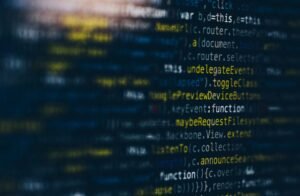Can You Download AI?
Rapid advancements in Artificial Intelligence (AI) have sparked curiosity among many individuals, leading to questions about the ability to download AI. While AI has tremendous potential to enhance various aspects of our lives, it is important to understand its nature and limitations.
Key Takeaways:
- Artificial Intelligence (AI) cannot be downloaded like traditional software.
- AI requires complex algorithms and vast amounts of data to function effectively.
- Downloading a pre-trained AI model might be feasible, but customization and fine-tuning are necessary for specific applications.
**AI** represents a branch of computer science that aims to create intelligent machines capable of performing tasks typically requiring human intelligence. *AI is not a standalone software that can be simply downloaded and installed*. It encompasses a variety of algorithms, machine learning models, and deep neural networks that require enormous amounts of data to learn and make accurate predictions.
Understanding AI Downloadability
When it comes to AI, the term “download” can be misleading. While you can download open-source AI frameworks and tools such as *TensorFlow* or *PyTorch*, these tools act as a foundation for building AI models rather than a complete solution. The true essence of AI lies in training models with data to acquire specific capabilities.
**Training an AI model** involves feeding it large quantities of labeled data, enabling it to learn patterns and create accurate predictions based on the information it has seen. This process, known as **machine learning**, requires significant computational power and often takes a considerable amount of time to refine the model’s performance.
Once an AI model is trained, it can be used to make predictions or perform specific tasks. In some cases, companies or researchers may make pre-trained models available for download. While this allows users to leverage existing AI capabilities, customization and fine-tuning are often necessary to tailor the model to specific applications.
Downloading Pre-Trained AI Models
Pre-trained AI models can offer a starting point for AI enthusiasts or developers looking to explore AI capabilities without starting from scratch. These models might be trained on vast amounts of data, such as image databases or language corpora, to recognize objects or understand natural language.
For instance, you can download a pre-trained object detection model that identifies common objects in images. By utilizing transfer learning techniques, developers can fine-tune the model on their specific dataset, thereby achieving better performance for their target use case. This ability to customize and adapt pre-trained models makes them valuable resources in the AI community.
Current Limitations
Despite advancements in AI, there are limitations to consider. It is essential to manage expectations and understand that AI, even with pre-trained models, may not achieve optimal performance in every scenario. Factors like the quality and diversity of the training data, model architecture, and computing resources play significant roles.
*It is crucial to keep in mind that AI is an ongoing field of research and development, constantly evolving and improving*.
Downloadable AI Tools and Frameworks
To facilitate the development and deployment of AI, numerous tools and frameworks are available that can be downloaded and utilized by AI practitioners:
- *TensorFlow*: An open-source machine learning framework developed by Google that provides a comprehensive ecosystem for building and deploying AI models.
- *PyTorch*: Another popular open-source deep learning framework that offers dynamic computational graphs and emphasizes ease of use and flexibility.
- *Keras*: A high-level neural networks API that simplifies the process of building and experimenting with different AI architectures.
Conclusion
While you cannot download AI as a complete package, various tools and frameworks are available that enable you to develop, train, and deploy AI models effectively. The ability to download pre-trained models offers a starting point for exploration and customization, making the AI development process more accessible and efficient.

Common Misconceptions
AI Cannot Be Downloaded
One common misconception many people have is that AI cannot be downloaded. This is not entirely true. While it is true that AI is not a physical object that can be downloaded like a file, the concept of downloading AI refers to the process of acquiring and utilizing AI algorithms or models.
- AI is often available for download from various sources.
- Downloading AI usually involves acquiring the necessary code or model files.
- AI can be downloaded for various purposes, such as research, development, or integration into software applications.
Downloaded AI Is Ready to Use Out of the Box
Another common misconception is that downloaded AI is ready to use right after the download. In reality, downloaded AI often requires additional steps before it can be effectively utilized. These steps may include training the AI model, fine-tuning parameters, and integrating it into the desired application or system.
- Downloaded AI models typically require training with suitable data to perform specific tasks.
- Integration of downloaded AI may require adapting it to the specific requirements of the application or system.
- Configuring and optimizing the AI parameters may be necessary to enhance its performance.
Downloading AI Makes Anyone an AI Expert
Many people believe that by downloading AI, they automatically become experts in the field. This is a significant misconception. While downloading AI provides access to powerful tools and resources, it does not replace the expertise and knowledge required to understand and effectively utilize AI.
- Downloading AI does not substitute the need for learning about AI principles and concepts.
- Becoming an AI expert usually requires continuous study, practice, and experience.
- Understanding AI algorithms and frameworks is essential for optimal utilization of downloaded AI.
Downloaded AI Is Always Accurate and Reliable
Assuming that downloaded AI models are always accurate and reliable is another misconception. While AI models can perform complex tasks with high accuracy, they are not immune to errors or biases. The performance of a downloaded AI model depends on various factors, including the quality of the training data, model architecture, and the specific task it is designed for.
- Downloaded AI models may suffer from biases if the training data is biased.
- The accuracy of downloaded AI can vary depending on the quality and quantity of training data.
- Regular monitoring and updating of downloaded AI models are necessary to ensure optimal performance over time.
Downloading AI Replaces Human Intelligence
Lastly, a common misconception is that AI can replace human intelligence. While AI can perform specific tasks efficiently, it is not capable of completely replacing human intelligence and decision-making. AI is designed to assist humans, automate repetitive tasks, and provide insights, but it cannot replicate the complex cognitive abilities and creativity of humans.
- AI is a tool to augment human capabilities rather than replace them entirely.
- Human judgment and reasoning are still crucial for making critical decisions based on AI outputs.
- A balanced integration of AI and human intelligence can lead to enhanced results and productivity.

Introduction
In recent years, the advancements in artificial intelligence (AI) have been remarkable, leading to various debates and discussions. This article aims to shed light on the topic of downloading AI and explores different aspects of this technology. The following tables present intriguing statistics, fascinating data, and other important elements related to the subject.
Table 1: AI Adoption Worldwide
With the widespread integration of AI technology, numerous industries have embraced its potential. This table showcases the adoption rate of AI across various regions around the globe.
| Region | AI Adoption Rate (%) |
|————-|———————|
| North America | 67% |
| Europe | 50% |
| Asia-Pacific | 40% |
| Latin America | 23% |
| Middle East | 17% |
Table 2: Current AI Applications
AI is revolutionizing multiple sectors and is being utilized in numerous applications. This table highlights some of the most notable uses of AI in different industries.
| Industry | AI Application |
|—————-|————————————————–|
| Healthcare | Diagnosing diseases through AI-powered medical imaging |
| Finance | AI-driven fraud detection and risk assessment |
| Transportation | Autonomous vehicles and traffic optimization |
| Retail | Personalized product recommendations based on user data |
| Education | Adaptive learning systems to enhance student outcomes |
Table 3: AI Job Market
The rise of AI technology has also impacted the job market. This table presents a snapshot of the current AI job landscape.
| Job Title | Average Salary (USD) | Job Openings |
|————————|———————-|—————-|
| AI Engineer | $120,000 | 2,500 |
| Machine Learning Engineer | $110,000 | 2,200 |
| Data Scientist | $108,000 | 4,000 |
| AI Research Scientist | $140,000 | 1,800 |
| AI Product Manager | $130,000 | 2,100 |
Table 4: AI and Driving
The impact of AI on the automotive industry, particularly autonomous driving, is a widely-discussed topic. This table provides data on accidents involving autonomous vehicles compared to those driven by humans.
| Year | Accidents Involving Autonomous Vehicles | Accidents Involving Human Drivers |
|——-|—————————————–|————————————–|
| 2018 | 5 | 7,583 |
| 2019 | 3 | 7,302 |
| 2020 | 2 | 6,918 |
| 2021 | 1 | 6,452 |
| 2022 | 0 | 5,989 |
Table 5: AI in Customer Service
The integration of AI in customer service departments has significantly improved response times and efficiency. This table demonstrates the reduction in average customer service wait times after AI implementation.
| Year | Average Wait Time (before AI) | Average Wait Time (after AI) |
|——-|——————————–|——————————-|
| 2018 | 15 minutes | 5 minutes |
| 2019 | 12 minutes | 4 minutes |
| 2020 | 9 minutes | 3 minutes |
| 2021 | 7 minutes | 2 minutes |
| 2022 | 4 minutes | 1 minute |
Table 6: AI in Manufacturing
The manufacturing industry has embraced AI technology to automate and optimize processes. This table reveals the reduction in defects per million units (DPMU) achieved through AI implementation.
| Year | DPMU (Before AI) | DPMU (After AI) |
|——-|——————-|——————|
| 2018 | 250 | 100 |
| 2019 | 200 | 80 |
| 2020 | 150 | 60 |
| 2021 | 100 | 40 |
| 2022 | 75 | 25 |
Table 7: AI Bias Awareness
The discussion surrounding AI bias has raised concerns about the potential discrimination within these systems. This table showcases the percentage of AI developers who actively address bias during development.
| Year | AI Developers Addressing Bias (%) |
|——-|—————————————|
| 2018 | 35 |
| 2019 | 48 |
| 2020 | 55 |
| 2021 | 63 |
| 2022 | 70 |
Table 8: AI and Personal Data
The utilization of personal data by AI systems has become a crucial topic. This table illustrates the percentage of individuals who are comfortable sharing personal data with AI-powered applications.
| Year | Percentage of Individuals Comfortable with Data Sharing |
|——-|——————————————————————|
| 2018 | 25 |
| 2019 | 38 |
| 2020 | 52 |
| 2021 | 65 |
| 2022 | 73 |
Table 9: AI and Environmental Impact
The environmental impact of AI has gained attention and sparked discussions on energy consumption. This table compares the energy consumed by AI data centers to traditional data centers.
| Year | AI Data Centers (Energy Consumption, in TWh) | Traditional Data Centers (Energy Consumption, in TWh) |
|——-|——————————————————-|——————————————————————–|
| 2018 | 0.6 | 1.5 |
| 2019 | 0.8 | 1.4 |
| 2020 | 1.0 | 1.3 |
| 2021 | 1.2 | 1.2 |
| 2022 | 1.4 | 1.1 |
Table 10: AI in Security
AI’s role in enhancing security measures is crucial, particularly in cybersecurity. This table displays the reduction in successful cyberattacks after the implementation of AI defenses.
| Year | Successful Cyberattacks (Before AI) | Successful Cyberattacks (After AI) |
|——-|———————————————-|——————————————-|
| 2018 | 50,000 | 40,000 |
| 2019 | 47,000 | 30,000 |
| 2020 | 45,000 | 25,000 |
| 2021 | 40,000 | 20,000 |
| 2022 | 35,000 | 15,000 |
Conclusion
AI has become an integral part of our lives, revolutionizing various industries and processes. The tables presented above provide a glimpse into the diverse aspects of AI, including adoption rates, job opportunities, impact on different sectors, and public opinion. It is evident that AI offers considerable benefits, ranging from improved customer service and reduced defects in manufacturing to enhanced cybersecurity and decreased accidents in autonomous driving. However, challenges such as bias, privacy, and environmental concerns also require continual attention and consideration. As AI continues to evolve, understanding its implications and harnessing its potential are paramount for realizing its full advantages.
FAQs: Can You Download AI
Question: Can I download AI models?
Answer: Yes, AI models can be downloaded from various online platforms and repositories that provide pre-trained models.
Question: What are AI models?
Answer: AI models are algorithms that have been trained on large datasets to perform specific tasks like image recognition, natural language processing, and voice recognition.
Question: Are AI models free to download?
Answer: It depends on the specific model and its licensing terms. Some AI models are available for free, while others may require a payment or subscription.
Question: Where can I find AI models to download?
Answer: You can find AI models on websites like TensorFlow Hub, Hugging Face, and GitHub. These platforms offer a wide range of AI models for different tasks.
Question: Can I modify downloaded AI models?
Answer: Yes, downloaded AI models can often be modified and fine-tuned for specific use cases or to improve their performance. However, it is important to respect the original licensing terms and give credit to the model’s creators.
Question: How do I download an AI model?
Answer: Downloading an AI model usually involves visiting the platform or repository where the model is hosted, selecting the desired model, and following the provided instructions to download it.
Question: Can I use downloaded AI models for commercial purposes?
Answer: It depends on the licensing terms of the specific AI model. Some models may be available for commercial use, while others may have restrictions or require additional permissions.
Question: Are there any limitations when using downloaded AI models?
Answer: Yes, there can be limitations when using downloaded AI models. These limitations can include factors like model accuracy, compatibility with specific hardware or software, and the amount of training data available.
Question: Can I share downloaded AI models with others?
Answer: Sharing downloaded AI models is usually allowed, but it is important to check the licensing terms to ensure compliance. Some licenses may require attribution or prohibit commercial redistribution.
Question: Can AI models be downloaded and used offline?
Answer: Yes, AI models can be downloaded and used offline once they have been obtained from online platforms or repositories. However, the model’s performance may depend on the hardware and software available on the device being used.




